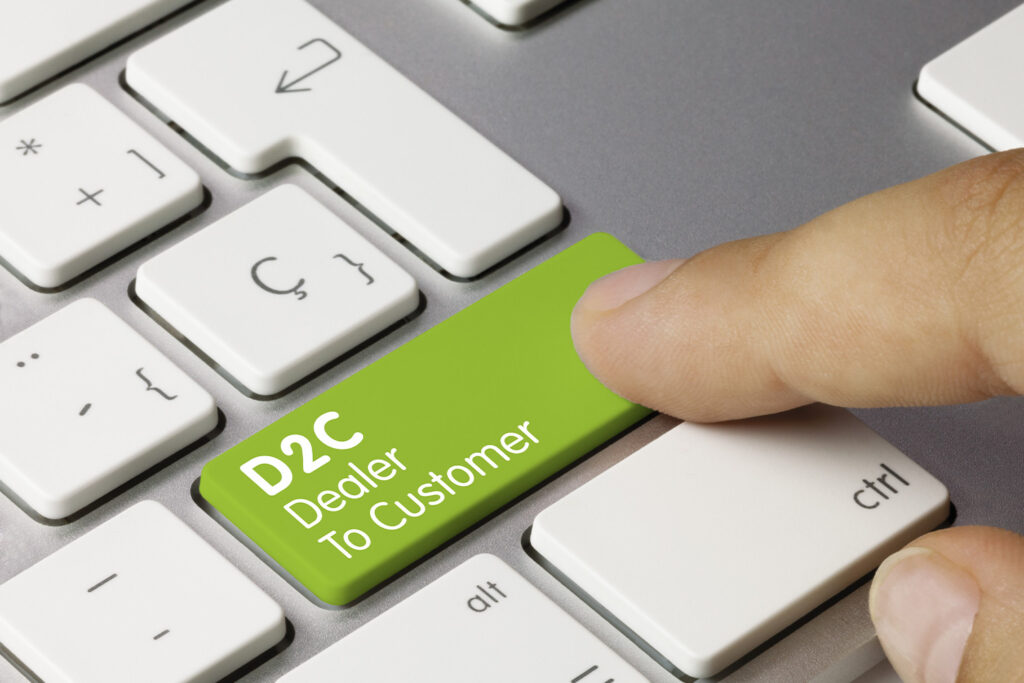It seems that D2C is all the rage these days, but what does this actually mean, and how can you take advantage of it as an entrepreneur?
Here’s the ultimate guide on D2C to tell you everything you need to know:
What Does D2C Mean?
Direct-to-consumer or D2C is a business model wherein a company sells products or services directly to the consumer with no need for go-betweens or third parties. This model differs from the traditional retail model wherein one company manufactures products before selling them to a retailer who sells them to consumers. This traditional retail model is often referred to as “B2C” or business-to-consumer.
While the D2C model has seen a popularity boom in recent years, it’s not exactly a new concept. In fact, the D2C model can be traced back to the 15th century with the first mail-order catalog.
This variation of the D2C model remained popular throughout the 20th century: People were able to browse and order different products directly from a company and then receive them by mail.
How Does D2C Work?
D2C works by cutting out the middleman. This means that the company is involved in everything from manufacturing to marketing to fulfillment. The process begins with product development before moving on to manufacturing.
From there, products are listed (usually online) and are marketed to consumers. Finally, consumers purchase products directly from the company who then works to fulfill these orders.
Pros and Cons of the D2C Model
As with any business model, there are both pros and cons of using the D2C model. Here’s what you need to know:
Pros of the D2C Business Model
- There are low barriers to entry: There are few barriers to entry for D2C businesses since you’re working directly with consumers rather than other businesses. This means that if people like your business and products, you’re going to experience success without having to deal with third parties that may be skeptical about your concept.
- You have more control: D2C businesses have more control over their brand image and reputation since there is only one business involved in the operation. Other business models incorporate other companies to actually sell to consumers — essentially putting your reputation in someone else’s hands.
- You’ll receive better information: D2C businesses also have more access to valuable customer information since there’s only one company involved in every step along the way. For instance, you can gain information from marketing data (before purchase) and customer feedback data (after purchase) to improve each step in your funnel.
Consof the D2C Business Model
- You’ll face tough competition: Since the barriers to entry are low, this means that you’re likely to deal with a lot of tough competition as a D2C brand. After all, you’re doing it — what’s stopping others from doing it too? However, the good news is that you can do things to set yourself apart from the competition in the D2C arena.
- You have increased liability: Since there’s only one company involved in the D2C model, this means that only one company is liable for any issues that may come up along the way rather than sharing liability with multiple companies in a B2C model.
- A certain level of expertise is required: Expertise is required in the D2C model since the company handles manufacturing and marketing. As a result, D2C companies often need to be “jacks of all trades” or work with experts from various fields to fill in the gaps.
Is the D2C Model the Right Choice for You?
So based on these pros and cons, how can you determine if the D2C model is the right choice for you? It depends on what you’re trying to sell and who you’re trying to sell it to. If you’re trying to sell common products like clothing, makeup, foods, etc., then the D2C model might work well for you. If you’re trying to sell to younger generations like Millennials or Generation Z, then the D2C model might be the right choice.
On the other hand, if you’re trying to sell specialized products that customers need to see physically, then D2C might not be the best approach since it’s primarily done online. In that case, it might be better to work with a retailer with established storefronts and customer bases.
And if you’re trying to sell to older generations like Baby Boomers that tend to shy away from online shopping, then D2C might not be the right choice, and you should consider the traditional B2C approach.
Tips to Make the D2C Model Work for You
If you have decided that the D2C model is the right choice for your business idea, it’s time to make it happen.
Here are some tips to help you experience success with this business model:
Build the Brand Groundwork
Since you’re solely in control of your brand image and reputation, you need to take full advantage of this by working to establish brand awareness and a positive brand image. This can definitely be challenging within the D2C model, wherein it’s completely up to you to get the word out about your products in a crowded market.
Start by figuring out what you want your brand to represent and establish your brand identity by telling your brand’s story, where you came from, and where you hope to go. From there, build awareness by launching some brand awareness marketing campaigns so that your target customers know who you are and what you offer.
Set Yourself Apart
With all the competition out there, you really need to set yourself apart as a D2C brand. The best way to do this is to develop a unique value proposition. This proposition demonstrates to consumers what you offer and what makes you better than the rest. It should be short, sweet, and easy to understand. It’s also a promise to your customers regarding the type and quality of products or services that you offer.
Know Your Customers
Now that you know more about your brand and what you have to offer, you need to learn more about your customers so that you can better cater to them. This starts with market research, finding out who is likely to buy your products or services. If you already have an established customer base, go to them directly for more information through surveys.
Learning about your customers shouldn’t be a one-time thing. Instead, it should be an ongoing process. Continue to collect information from your customers and use it to guide your decisions as a D2C business.
Invest in Marketing
Marketing is important for any business, but it’s vital for D2C businesses. You need to invest in effective marketing strategies to promote your brand and build your customer base. Go where your customers are and make sure to use an omnichannel approach for a seamless customer experience from start to finish. Consistently track your KPIs and be on the lookout for ineffective strategies that are just wasting money.
Check out the Greg Gillman blog for more tips and tricks on using an omnichannel approach for D2C growth.
Final Thoughts on the D2C Model
Launching a successful D2C business isn’t easy, but it is possible with the right support and expertise. If you need any help along your business journey, feel free to reach out to Greg Gillman for tailored advice and guidance to get you where you want to go.
Sources:
The Direct to Consumer Revolution Is Here | Forbes
Direct to Consumer Advertising (DTC Advertising) Definition | Investopedia
What Is D2C Marketing and Why Do Millennials Love It So Much? | Fundera


